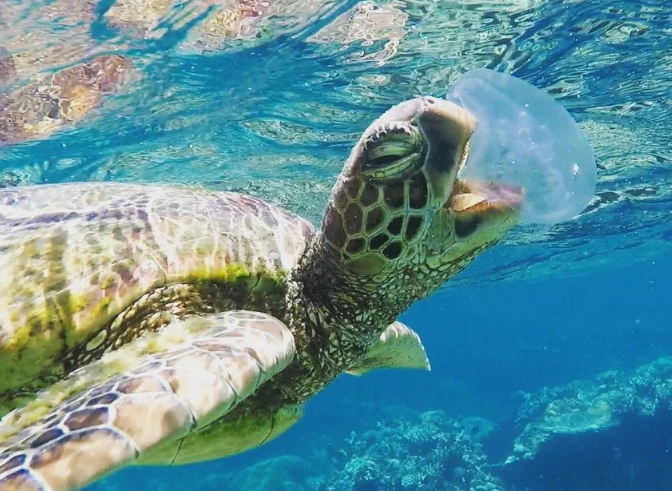Sea turtles are known for their graceful swimming abilities and their importance in marine ecosystems. However, their diet has long been shrouded in mystery. What do sea turtles really eat? Let’s uncover the secrets of their diet.
Variety on the Menu
Sea turtles are known to have a varied diet, depending on their species and habitat. Some species, like the green sea turtle, are primarily herbivores and feed on seagrass and algae. Other species, like the loggerhead turtle, are omnivores and will eat a mix of plants and animals including jellyfish, mollusks, and crustaceans.
Hunting Techniques
Sea turtles have unique hunting techniques that vary depending on their diet. Herbivorous sea turtles will swim along the ocean floor grazing on seagrass and algae. Carnivorous sea turtles, on the other hand, will actively hunt for their prey, using their sharp beaks to catch and tear apart their food.
Surprising Discoveries
Recent studies have uncovered some surprising aspects of sea turtles’ diet. For example, leatherback sea turtles are known to feed on jellyfish, consuming large quantities of the gelatinous creatures to sustain their energy needs. This has led to concerns about the impact of plastic pollution on sea turtles, as they can mistakenly ingest plastic bags thinking they are jellyfish.
The Role of Sea Turtles in Marine Ecosystems
Sea turtles play a crucial role in marine ecosystems as both predators and prey. By feeding on seagrass and controlling populations of certain marine species, they help maintain the health and balance of ocean ecosystems. Additionally, their role as prey for sharks and other predators helps regulate the populations of these animals.
Protecting Sea Turtles’ Habitat and Food Sources
As we uncover more about the secrets of sea turtles’ diet, it becomes clear that protecting their habitat and food sources is crucial for their survival. Conservation efforts are underway to reduce plastic pollution, preserve seagrass beds, and protect important nesting sites for sea turtles. By working together to protect these magnificent creatures, we can ensure a healthy future for sea turtles and the marine ecosystems they inhabit.

